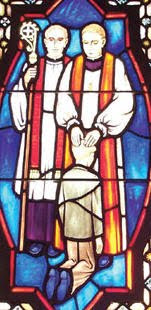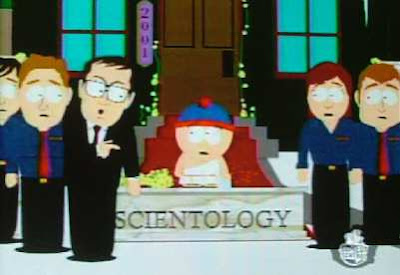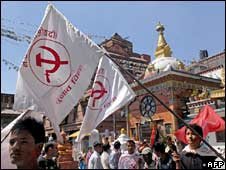Practicing This Very Moment
I'd like to talk about the basic problem of sitting [in meditation]. Whether you've been sitting a short time or for ten years, the "problem" is always the same.
When I went to my first sesshin (intensive Zen meditation retreat) many years ago, I couldn't decide who was crazier -- me or the people sitting around me. It was terrible! The temperature was almost 105 degrees every day of the week. I was covered with flies. And it was a noisy, bellowing sesshin. I was completely upset and baffled by the whole thing. But once in a while I'd go in to see Yasutani Roshi, and there I saw something that kept me sitting.
Unfortunately, the first six months or year of sitting are the hard ones. You have to face confusion, doubts, problems. And you haven't been sitting long enough to feel the real rewards. But the difficulty is natural, even good.
As your mind slowly goes through all of these things, as you sit here, confusing and ridiculous as it may seem, you're learning a tremendous amount about yourself. And this can only be of value to you. Please continue to sit with a group as often as you can, and see a good teacher as often as you can. If you do that, in time, this practice will be the best thing in your life.
It doesn't matter what our practice is called: following the breath, shikantaza, koan study. Basically, we're all working on the same issues: Who are we?
What is our life?
Where did we come from?
Where do we go?
It's essential to living a whole human life that we have some insight. So first I'd like to talk about the basic task of sitting. And in talking about it, realize that TALKING IS NOT IT. Talking is just the finger pointing at the moon.
In sitting we are uncovering Reality, Buddha-nature, "God," True Nature. Some call it "Big Mind." Words for it that are particularly apt for the way I want to approach it right now are "this very moment."
The
Diamond Sutra says, "The past is ungraspable, the present is ungraspable, and the future is ungraspable." So all of us in this room, where are we? Are we in the past? No. Are we in the future? No. Are we in the present? No, we can't even say we're in the present.
There's nothing we can point to and say, "This is the present." There are no boundary lines that define the present. Maybe all we can say is, "We are this very moment." And because there's no way of measuring it, defining it, pinning it down, even seeing what it is, it's immeasurable, boundless, infinite. It's what we are.
BEGINNINGS
Now, if it's as simple as that, what are we all doing here? I can say, "This very moment." That sounds easy, doesn't it? Actually it's not. To really see it is not so easy. Or we wouldn't all be doing this.
Why isn't it easy? Why can't we see it? And what is necessary so that we can see it? Let me tell you a little story.
Many years ago I was a piano major at Oberlin Conservatory. I was a very good student, not outstanding, but very good. And I very much wanted to study with one teacher who was undoubtedly the best. He'd take ordinary students and turn them into fabulous pianists. Finally, I got my chance to study with the teacher.
When I went in for my lesson, I found that he taught with two pianos. He didn't even say hello. He just sat down at his piano and played five notes. And then he said, "You do it." I was supposed to play it just the way he played it. I played it. And he said, "No." He played it again, and I played it again. Again he said, "No." Well, we had an hour of that. And each time he said, "No."
In the next three months I played about three measures, perhaps half a minute of music. Now I had thought I was pretty good. I'd played soloist with little symphony orchestras. Yet, we did this for three months. And I cried most of those three months.
He had all the marks of a real teacher, that tremendous drive and determination to make the student see. That's why he was so good. And at the end of three months, one day, he said, "Good." What had happened?
Finally, I had learned to listen. And as he said, if you can hear it, you can play it. What had happened in those three months? I had the same set of ears I started with. Nothing had happened to my ears. What I was playing was not technically difficult. What had happened was that I had learned to listen for the first time...and I'd been playing the piano for many years. I learned to pay attention.
That was why he was such a great teacher. He taught his students to pay attention. After working with him they really heard, they really listened. When you can hear it, you can play it. And finished, beautiful pianists would finally come out of his studio.
It's that kind of attention which is necessary for our Zen practice. We call it samadhi [calm, collectedness, intense focus, concentratedness, absorption], this total oneness with the object. But in my story that attention was relatively easy. It was with an object I liked.
This is the oneness of any great art, the great athlete, the person who passes well on the football field, the person who does well on the basketball court, anybody like that who has to learn to pay attention.
It's that kind of samadhi (single-pointed awareness, where mind and body fall away, and one is in "the zone").
















































































































































































































































































